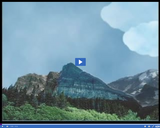
In this video from Common Ground and Cleaner Water, Tribby Vice, a Kentucky farmer, talks about the changes he has made on his farm to protect the water quality of the stream running through his property and the watershed in which he lives.
- Subject:
- Agriculture Education
- Astronomy
- Biology
- Career and Technical Education
- Science
- Material Type:
- Lecture
- Provider:
- PBS LearningMedia
- Provider Set:
- Teachers' Domain
- Date Added:
- 08/15/2008
